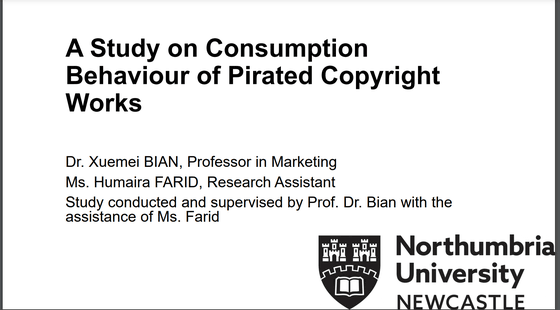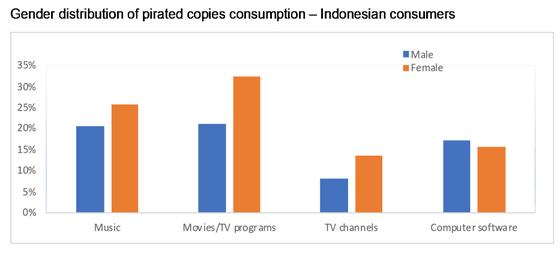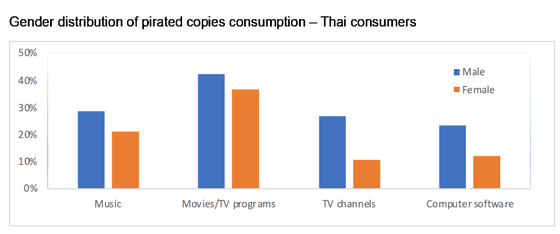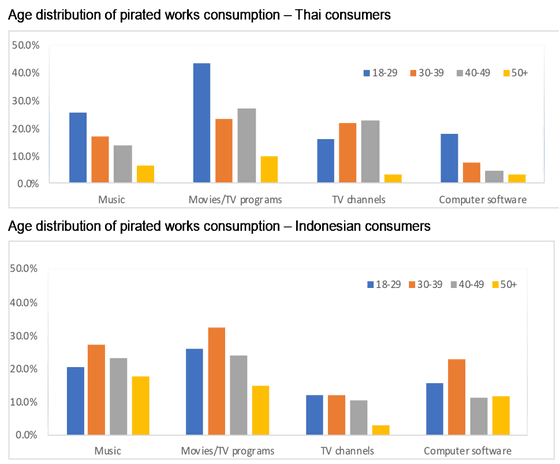Ten years ago, the majority of pirate users were young men, but in recent years, the number of pirate users has increased regardless of age or gender, and in some countries, the number of pirate users is now higher than that of women.

A 2013 survey showed that 95% of users of pirated content were male, and young men were thought to be the main users. However, a 2023 survey by the European Union (EU) suggested that the gender and age distribution was diversifying, and a 2024 survey on piracy by marketing experts found that there were countries where female users outnumbered male users.
(PDF file)A Study on Consumption Behavior of Pirated Copyright Works

In Indonesia, Women Pirate More Music and Movies Than Men * TorrentFreak
https://torrentfreak.com/in-indonesia-women-pirate-more-music-and-movies-than-men-240303/
In 2013, a team of cybercrime researchers at Sweden's Lund University, in collaboration with The Pirate Bay , a search index for pirated digital content, conducted a survey of 75,000 torrent site users. Although the survey was conducted widely across regions, only 5% of the respondents were women, and even on the torrent sites with the most female visitors, the proportion of women was about 20%. Therefore, it was concluded that 'torrent sites are mainly used by men.'
While the findings of this survey and others have led to a common stereotype that online pirates are young men, a survey published by the EU Intellectual Property Office (EUIPO) in September 2023 showed a more diverse age distribution and considered gender to be a 'less relevant variable with no clear distributional value or insight.'

Therefore, a study published in 2024 by researchers at Northumbria University in the UK conducted a gender-inclusive survey of pirate users. The study aimed to map piracy trends in Thailand and Indonesia in detail. The findings confirmed that piracy is a serious problem in Thailand and Indonesia, with piracy of music, movies, and TV shows especially active.
The results for the popular genres and ages of pirated content were similar to those seen in most countries, but when gender was included in the analysis, notable differences emerged between Thailand and Indonesia. The table below shows the number of pirate users in Indonesia by gender, with the blue bars representing men and the orange bars representing women. The graph shows that only computer software has a slightly higher proportion of males, while the proportion of females is higher in the other areas such as music, movies and television.

The graph below shows the number of pirate users in Thailand, with the blue bars representing men and the orange bars representing women. In Thailand, there were more men than women in every genre.

The graph below shows the age distribution of pirate users by category, with blue indicating 18-29 years old, orange indicating 30-39 years old, gray indicating 40-49 years old, and yellow indicating 50 years old and over. The top is the result of a survey in Thailand, and the bottom is the result of a survey in Indonesia. Although the 18-39 age group is often the largest demographic, there is a wide range of ages represented overall.

The researchers did not directly address whether gender or age differences were related to piracy trends, but said: 'Various national trends in piracy have been observed. Policies and strategies aimed at combating piracy need to take into account content categories, consumer characteristics, and regional differences.'
Related Posts:
in Note, Posted by log1e_dh







